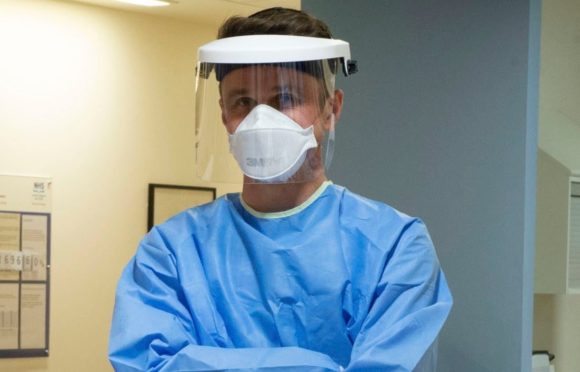
Respiratory consultant Tom Fardon warns the age of victims in the second wave of Covid seems far younger than those in the first.
The doctor, who works at Ninewells Hospital in Dundee, said: “In the first wave, the patients we saw who were most at risk were in their 70s and 80s.
“With this second wave, the virus has become more easily transmissible and we’re seeing much younger people. In the intensive care unit, the reality is that half those patients won’t survive.”
Mr Fardon has experienced the horror of Covid-19 on both sides of the bed, as a patient and as one of the country’s most respected respiratory specialists.
He recalled the challenges of mid-March’s upsurge in cases: “It was deeply worrying because at that point there was no vaccination and we were working out how best to treat our patients.”
On April 13, after a month on the frontline, he tested positive for Covid. Mr Fardon said: “I developed tinnitus, headaches and a sore throat.
“I’m a very fit 44-year-old marathon runner, and I was shocked how hard it hit me. I was able to go back to work a month later, but I still have the symptoms of long Covid. Fatigue and the tinnitus remain.”
Over the subsequent months he has learned to appreciate the good days, adding: “Clapping a patient out of hospital gives everyone huge satisfaction. Losing a patient is devastating. We support each other.
“The virus doesn’t discriminate and we’ve seen husbands and wives, fathers and daughters ending up in hospital as Covid rips through whole families.”
Amid the life and death battles, his team displays calm professionalism: “It can feel very quiet and still, despite all the tubes and machinery. That calm is what our patients need to help them recover.”

Enjoy the convenience of having The Sunday Post delivered as a digital ePaper straight to your smartphone, tablet or computer.
Subscribe for only £5.49 a month and enjoy all the benefits of the printed paper as a digital replica.
Subscribe © Courtesy Unknown
© Courtesy Unknown